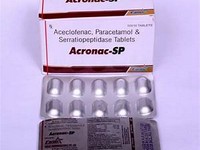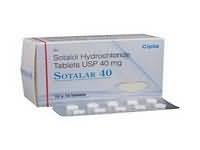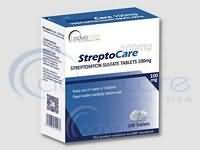Aceclofenac

Aceclofenac
CLINICAL USE
NSAID and analgesic
DOSE IN NORMAL RENAL FUNCTION
100 mg twice daily
PHARMACOKINETICS
Molecular weight :354.2 %Protein binding :>99 %Excreted unchanged in urine : 66 (mainly as metabolites) Volume of distribution (L/kg) :25 litreshalf-life – normal/ESRD (hrs) :4/Unchanged DOSE IN RENAL IMPAIRMENT
GFR (mL/MIN)
20 to 50 : Dose as in normal renal function but use with caution 10 to 20 : Dose as in normal renal function but avoid if possible <10 : Dose as in normal renal function but only if on dialysis DOSE IN PATIENTS UNDERGOING RENAL REPLACEMENT THERAPIES
CAPD :Not dialysed. Dose as in normal renal function. HD :Not dialysed. Dose as in normal renal function. HDF/high flux :Unknown dialysability. Dose as in normal renal function. CAV/VVHD :Not dialysed. Dose as in normal renal function IMPORTANT DRUG INTERACTIONS
Potentially hazardous interactions with other drugsACE inhibitors and angiotensin-II antagonists: antagonism of hypotensive effect; increased risk of nephrotoxicity and hyperkalaemiaAnalgesics: avoid concomitant use of 2 or more NSAIDs, including aspirin (increased side effects); avoid with ketorolac (increased risk of side effects and haemorrhage)Antibacterials: possible increased risk of convulsions with quinolonesAnticoagulants: effects of coumarins enhanced; possible increased risk of bleeding with heparins and coumarinsAntidepressants: increased risk of bleeding with SSRIs and venlafaxineAntidiabetic agents: effects of sulphonylureas enhancedAnti-epileptics: possibly increased phenytoin concentrationAntivirals: increased risk of haematological toxicity with zidovudine; concentration possibly increased by ritonavirCiclosporin: may potentiate nephrotoxicityCytotoxic agents: reduced excretion of methotrexate; increased risk of bleeding with erlotinibDiuretics: increased risk of nephrotoxicity; antagonism of diuretic effect, hyperkalaemia with potassium-sparing diureticsLithium: excretion decreasedPentoxifylline: increased risk of bleedingTacrolimus: increased risk of nephrotoxicity ADMINISTRATION
Reconstition
– Route
Oral Rate of Administration
–Comments
OTHER INFORMATION
Use with caution in uraemic patients predisposed to gastrointestinal bleeding or uraemic coagulopathiesInhibition of renal prostaglandin synthesis by NSAIDs may interfere with renal function, especially in the presence of existing renal disease – avoid if possible; if not, check serum creatinine 48–72 hours after starting NSAID therapy – if raised, discontinue NSAID therapy Use normal doses in patients with ESRD on dialysis if they do not pass any urineUse with great caution in renal transplant recipients; it can reduce intrarenal autocoid synthesis
See how to identify renal failure stages according to GFR calculation
See how to diagnose irreversible renal disease
Home









